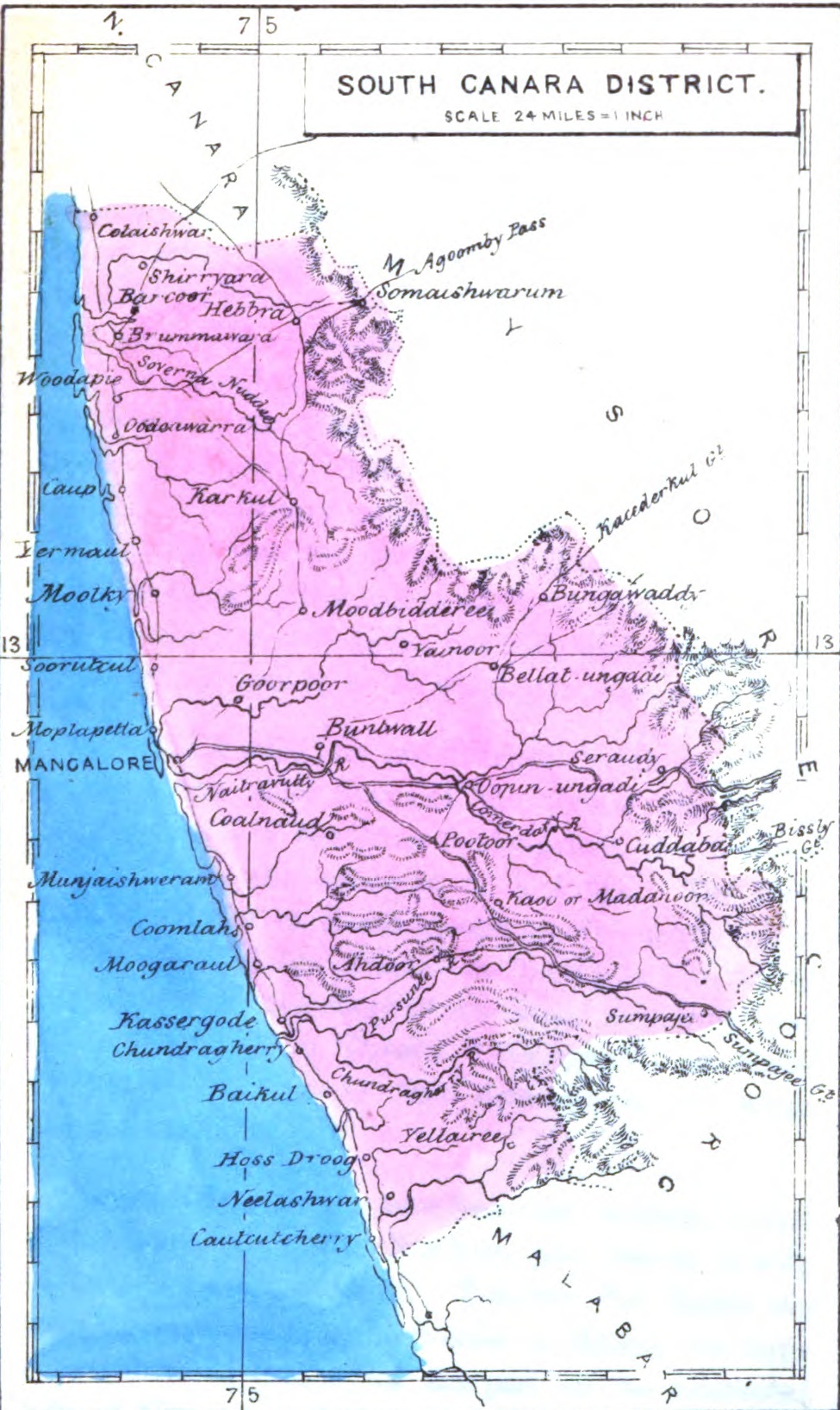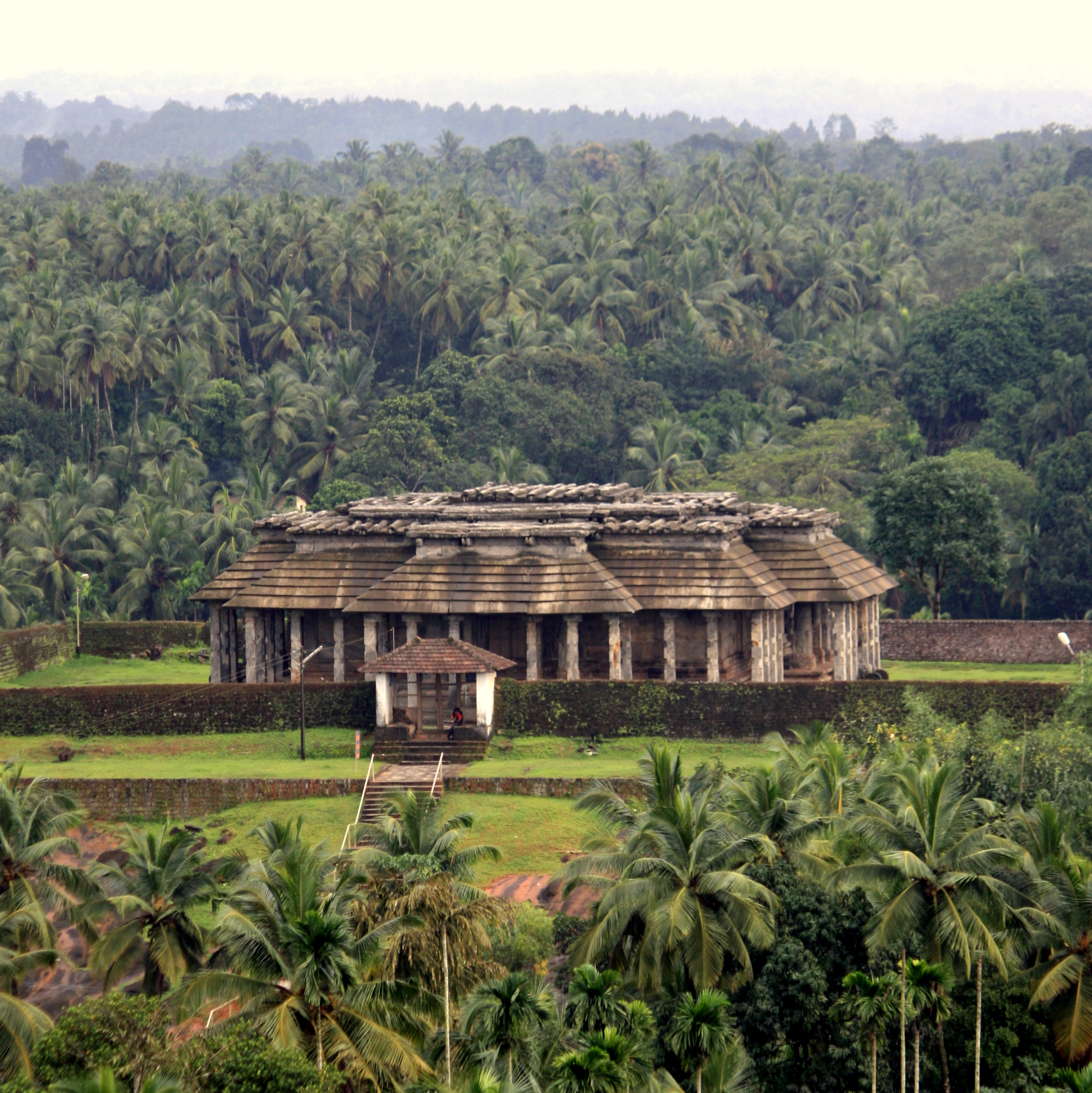|
Vadiraja Tirtha
Sri Vadiraja Tirtha (1480 – 1600) was a Dvaita philosopher, poet, traveller and mystic. He authored many works, often critical, on Madhva theology and metaphysics. Additionally, he composed numerous poems and as the pontiff of Sodhe Mutt, renovated the temple complex at Udupi and established the ''Paryaya'' system of worship. He also enriched the Kannada literature of the time by translating Madhvacharya's works to Kannada, giving impetus and contributing to the Haridasa movement. He has influenced both Carnatic and Hindustani music through his compositions. His compositions are mainly in Kannada and Sanskrit. His mudra is 'Hayavadana'. His works are characterised by their poetic flourishes, wit and humour. Life Vadirajaru was born as Bhuvaraha in Huvinakere, a village in the Kundapura taluk. He was ordained as a monk at the age of 8 and placed into the care of Vidyanidhi Tirtha and later Vagisha Tirtha, who oversaw his education. Works of contemporary Haridasas and o ... [...More Info...] [...Related Items...] OR: [Wikipedia] [Google] [Baidu] |
Hinduism
Hinduism () is an Hypernymy and hyponymy, umbrella term for a range of Indian religions, Indian List of religions and spiritual traditions#Indian religions, religious and spiritual traditions (Sampradaya, ''sampradaya''s) that are unified by adherence to the concept of ''dharma'', a Ṛta, cosmic order maintained by its followers through rituals and righteous living, as expounded in the Vedas. The word ''Hindu'' is an exonym, and while Hinduism has been called the oldest religion in the world, it has also been described by the modern term ''Sanātana Dharma'' () emphasizing its eternal nature. ''Vaidika Dharma'' () and ''Arya dharma'' are historical endonyms for Hinduism. Hinduism entails diverse systems of thought, marked by a range of shared Glossary of Hinduism terms, concepts that discuss God in Hinduism, theology, Hindu mythology, mythology, among other topics in Hindu texts, textual sources. Hindu texts have been classified into Śruti () and Smṛti (). The major Hin ... [...More Info...] [...Related Items...] OR: [Wikipedia] [Google] [Baidu] |
Hindu Units Of Time
Hindu units of time are described in Hindu texts ranging from microseconds to trillions of years, including cycles of cosmic time that repeat general events in Hindu cosmology. Time ( ) is described as eternal. Various fragments of time are described in the Vedas, ''Manusmriti'', ''Bhagavata Purana'', '' Vishnu Purana'', ''Mahabharata'', '' Surya Siddhanta'' etc. Sidereal metrics Sidereal astrology maintains the alignment between signs and constellations via corrective systems of Hindu (Vedic)-origin known as ayanamsas (Sanskrit: '''ayana''' "movement" + '''aṃśa "component"), to allow for the observed precession of equinoxes, whereas tropical astrology ignores precession. This has caused the two systems, which were aligned around 2,000 years ago, to drift apart over the centuries. Ayanamsa systems used in Hindu astrology (also known as Vedic astrology) include the Lahiriayanamsa and the Raman ayanamsa. The Fagan-Bradley ayanamsa is an example of an ayanamsa system used ... [...More Info...] [...Related Items...] OR: [Wikipedia] [Google] [Baidu] |
South Canara
South Canara (South Kannada) was a district of the Madras Presidency of British Raj, located at . It comprised the towns of Kassergode and Udipi and adjacent villages, with the administration at Mangalore city. South Canara was one of the most heterogeneous areas of Madras Presidency, with Tulu, Malayalam, Kannada, Konkani, Marathi, Hindustani, and Beary languages being spoken. It was succeeded by the Tulu-speaking areas of Dakshina Kannada district, the Malayalam-speaking area of Kasaragod district and the Amindivi islands sub-division of the Laccadives, in the year 1956. Geography Mangalore was the administrative headquarters of the district. The district covered an area of . South Canara District was bordered by North Canara to north, the princely state of Mysore to east, Coorg state to southeast, Malabar District to south, and Arabian Sea to west. South Canara was one of the two districts on the western coast (Malabar coast) of Madras Presidency along with Ma ... [...More Info...] [...Related Items...] OR: [Wikipedia] [Google] [Baidu] |
Jainism
Jainism ( ), also known as Jain Dharma, is an Indian religions, Indian religion whose three main pillars are nonviolence (), asceticism (), and a rejection of all simplistic and one-sided views of truth and reality (). Jainism traces its spiritual ideas and history through the succession of twenty-four , supreme preachers of ''dharma''. The first in the current time cycle is Rishabhadeva, who tradition holds lived millions of years ago; the 23rd is Parshvanatha, traditionally dated to the 9th century Common Era, BCE; and the 24th is Mahāvīra, Mahavira, who lived . Jainism is considered an eternal ''dharma'' with the guiding every time cycle of the Jain cosmology, cosmology. Central to understanding Jain philosophy is the concept of ''bhedavijñāna'', or the clear distinction in the nature of the soul and non-soul entities. This principle underscores the innate purity and potential for liberation within every Jīva (Jainism), soul, distinct from the physical and menta ... [...More Info...] [...Related Items...] OR: [Wikipedia] [Google] [Baidu] |
Buddhism
Buddhism, also known as Buddhadharma and Dharmavinaya, is an Indian religion and List of philosophies, philosophical tradition based on Pre-sectarian Buddhism, teachings attributed to the Buddha, a wandering teacher who lived in the 6th or 5th century Before the Common Era, BCE. It is the Major religious groups, world's fourth-largest religion, with about 500 million followers, known as Buddhists, who comprise four percent of the global population. It arose in the eastern Gangetic plain as a movement in the 5th century BCE, and gradually spread throughout much of Asia. Buddhism has subsequently played a major role in Asian culture and spirituality, eventually spreading to Western world, the West in the 20th century. According to tradition, the Buddha instructed his followers in a path of bhavana, development which leads to Enlightenment in Buddhism, awakening and moksha, full liberation from ''Duḥkha, dukkha'' (). He regarded this path as a Middle Way between extremes su ... [...More Info...] [...Related Items...] OR: [Wikipedia] [Google] [Baidu] |
Ankita Naama
Ankita is a Sanskrit word meaning "Marked". As with any adjective in the language, it can take on a nominal form. The word is often used as a female name in Asian countries, atypically because of its extended meaning as "one with auspicious signs "engraving". Notable people named Ankita * Ankita Bhakat (born June 17, 1998), Indian recurve archer. * Ankita Bhambri (born October 28, 1986), Indian former professional tennis player. * Ankita Lokhande (born December 19, 1981), Indian actress. * Ankita Makwana (born May 29, 1987), Swiss-Indian actress, model, producer, speaker and writer. * Ankita Bhargava Patel (born August 17, 1984), Indian television actress. * Ankita Raina (born January 11, 1993), Indian professional tennis player. * Ankita Mayank Sharma (born February 7, 1987), Indian model and television actress. * Ankita Shorey Ankita Shorey, is an Indian actress, model, and beauty pageant titleholder, who was crowned the Femina Miss International 2011, and represented Indi ... [...More Info...] [...Related Items...] OR: [Wikipedia] [Google] [Baidu] |
Ashta Mathas Of Udupi
The Ashta Mathas of Udupi () are a group of eight ''mathas'' or Hindu monasteries established by Madhvacharya, the preceptor of the Dvaita school of Hindu thought with his direct disciples to be the first Swami, head of the matha. The Ashta Mathas are named after the villages in which they were originally located. Today, the mathas are situated in the temple town of Udupi. The mathas work to propagate the Dvaita philosophy. They also administer the Udupi Krishna Temple by way of a formal rotation scheme called ''Paryaya''. Each pair of mathas is called Dvandva (literally, ''two'' or ''dual''). The four pairs of mathas are: Palimaru and Adamaru; Krishnapura and Puttige; Shirur and Sodhe; and Kaniyooru and Pejavara. *Uttaradi Math *Mathatraya of Tattvavada *Madhva Mathas References *Around the Car Street External links Official ...
|
Karkala
Karkala ( ) ( ) is a town and the headquarters of eponymous Karkala taluk in the Udupi district of Karnataka state in India. It lies near the foothills of the Western Ghats, Karkala has a number of natural and historical landmarks, and is a major tourist and transit destination due to its strategic location along the way to Hebri, Sringeri, Kalasa, Horanadu, Udupi, Kollur, Subrahmanya and Dharmasthala. Etymology Black granite is abundant in the area, and used widely in the local architecture. Hence, the name of the town is derived from ''kari-kal'', meaning black stone. There is still a place called as ''Kariya Kall'' in the city which means 'Black Rock' in Tulu and Kannada languages. The name 'Kariya Kall/ ಕರಿಯಕಲ್ಲ್ changed to 'Karikal/ಕರಿಕಲ್' and eventually to 'Karkal/ಕರ್ಕಲ್/ಕಾರ್ಕಳ್'. However, some studies assert that the original name was 'Kari Kola' meaning 'elephant lake' in Tulu and Kannada languages, which ... [...More Info...] [...Related Items...] OR: [Wikipedia] [Google] [Baidu] |
Moodabidri
Moodubidire (''Mūḍubidire''; also called Mudbidri, Moodbidri and Bedra) is a town and taluk in Dakshina Kannada district. It lies 34 km northeast of the district headquarters, Mangalore, in Karnataka, India. Because of widely grown bamboo in ancient days, this place was named as ''Moodubidire''. ''Moodubidire'' comes from two Kannada words, ''Moodu'' "east" and ''Bidiru'' "bamboo". Its average elevation is . Demographics India census, Moodabidri had a population of 25,710. Males constitute 48% of the population and females 52%. Moodabidri has an average literacy rate of 88.57%, Male literacy is 93.13%, and female literacy is 84.13%. Moodabidri basically contains two villages: Pranthya and Marnad. Moodabidri is also called as " Jaina Kashi of the South". Location Moodabidri is on National Highway 169 (old NH 13). It is accessible from Mangalore city (34 km away) by road. Mangalore International Airport is 23 km away from Moodabidri. It is 54 k ... [...More Info...] [...Related Items...] OR: [Wikipedia] [Google] [Baidu] |


